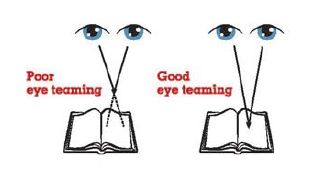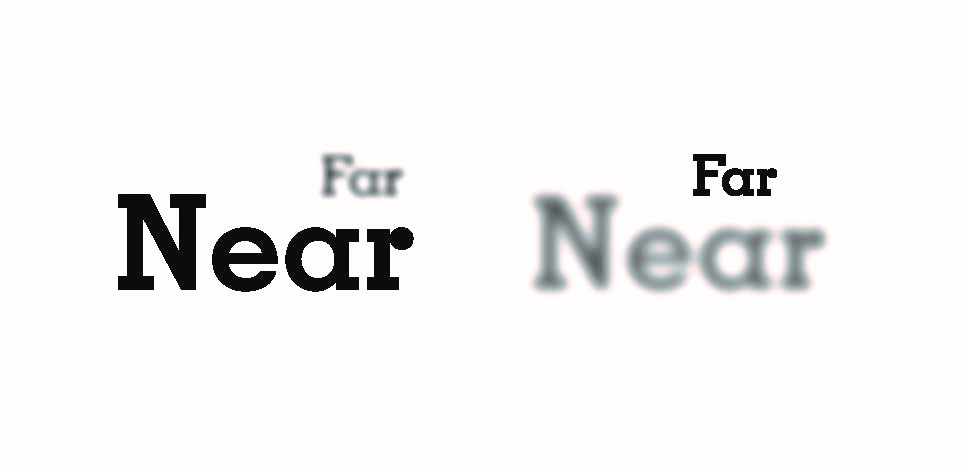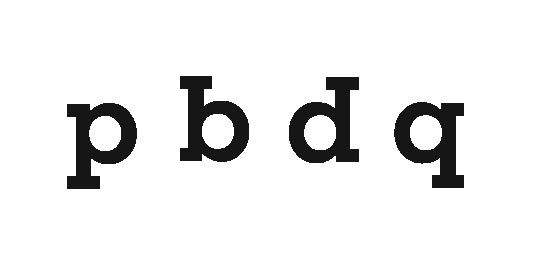We can SEE it now: This is the start of something big.
Great! You’ve completed our Symptom Checklist. This is an exciting step toward helping you or your child succeed in school, work, sports, and life.
We’ve already started the ball rolling by producing the personalized report below. This report covers the following:
- Your individual score
- A quick overview of the four areas of functional vision (did you know there are four?)
- A detailed breakdown about each area
Rylan’s Score: 27
Based on your score, we recommend the following…
Read on to find:
- Your personalized results in order of severity
- Which symptoms relate to which area of functional vision
- How Vision Therapy at Home can help
Ready? Let’s Go!
Tracking
The ability to move our eyes across the page smoothly and effortlessly.
Eye Teaming
The ability to use both eyes together as a team in order to keep a single image.
Focusing
The ability to clearly see an image; the ability to switch focus from near to far and vice versa.
Visual Processing
A set of skills we use to gather and organize visual information from the world around us.
Tracking
25%
of your overall symptoms.
Here are the symptoms you checked:
**Many Symptoms relate to more than one area of functional vision**
What is tracking?
Does it ever feel like your eyes start daydreaming? You’re not alone.
TRACKING is the ability to move our eyes efficiently in the direction we want to go. For example: Tracking a line of words on a page while reading, or watching a ball coming towards us while playing catch.
%nbsp;
What does poor eye tracking mean for me?
People with poor eye teaming often face symptoms including:
-
People with poor eye tracking often face symptoms including:
- Poor reading ability
- Slow reading speed
- Difficulty learning new words
- Lack of comprehension
- Skipping lines/words
- Poor hand/eye coordination
What can Vision Therapy at Home do for me?
VTAH can help you or your child become faster, more efficient readers—and that opens the door to enjoying reading. VTAH can also improve sports performance.
Eye Teaming (Binocularity)
25%
of your overall symptoms.
Here are the symptoms you checked:
**Many Symptoms relate to more than one area of functional vision**
What is eye teaming?
In order to have good functional vision, your eyes need to work as a team. Sometimes, however, they’re more like warring siblings.
EYE TEAMING is the brain’s ability to coordinate your eyes—first to determine where an object is, and then to accurately point at that object.

What does poor eye teaming mean for me?
People with poor eye teaming often face symptoms including:
- Headaches
- Fatigue
- Clumsiness
- Lack of coordination
- Poor depth perception
What can Vision Therapy at Home do for me?
VTAH can increase your eyes’ “stamina” for handling up-close tasks, such as homework and reading. This can improve concentration and comprehension.
VTAH can also improve hand-eye coordination which can improve overall coordination.
Focusing
14%
of your overall symptoms.
Here are the symptoms you checked:
**Many Symptoms relate to more than one area of functional vision**
What is focusing?
Feel like you’re in a blur? We get it. But life’s too short to live in a fuzzy world.
FOCUSING is the ability of the eyes and brain to work together to produce a clear image of an object, maintain that clarify, and allow you to switch back and forth between distances with ease (such as looking from your notebook up to the chalkboard—or from your phone up to the TV!).

What does poor eye focusing mean for me?
People with poor eye focusing often face symptoms including:
- Headaches
- Excessive blinking
- Poor stamina with homework
- Inattention
- Difficulty copying from the board in school
What can Vision Therapy at Home do for me?
VTAH can help you or your child reduce or eliminate headaches; improve stamina and comprehension with homework and reading; and enhance focus and attention.
Visual Processing
35%
of your overall symptoms.
Here are the symptoms you checked:
**Many Symptoms relate to more than one area of functional vision**
What is visual processing?
Sometimes it seems like your brain and eyes don’t speak the same language.
VISUAL PROCESSING is the brain’s ability to understand what you see and apply meaning to it. This is an essential part of learning, and it impacts areas such as handwriting, spelling, reading comprehension, and other perceptual skills.

What does poor visual processing mean for me?
People with poor visual processing often face symptoms including:
- Tendency to mix up letters such as “p” and “q;” and “b” and “d”
- Poor spelling
- Difficulty remembering math facts
- Problems learning new concepts
- Confusion over left vs. right, and trouble with directions
What can Vision Therapy at Home do for me?
VTAH can help you or your child improve ability to learn new concepts (which makes a big difference in enjoyment of school and work!); reduce or eliminate confusion over letters and words; improve math recall and memory; and enhance sense of direction.
